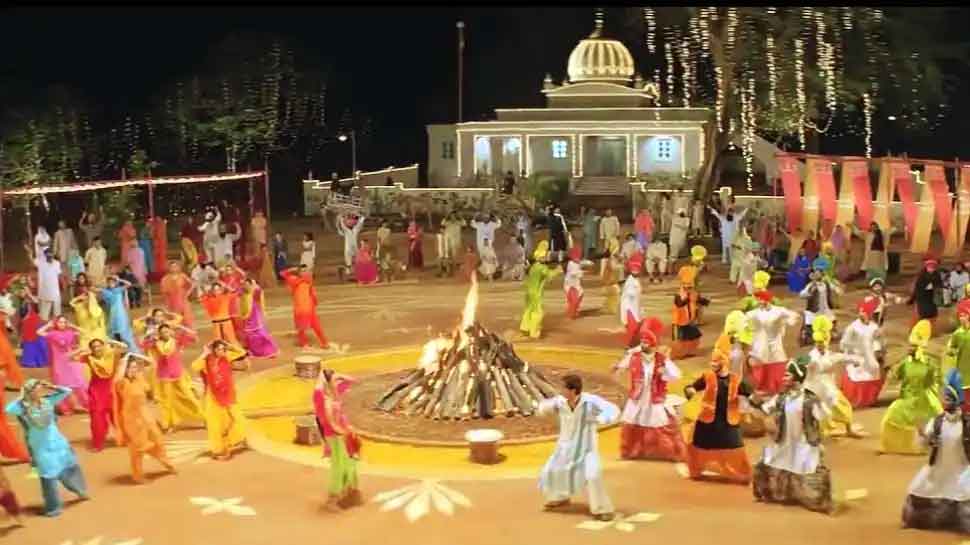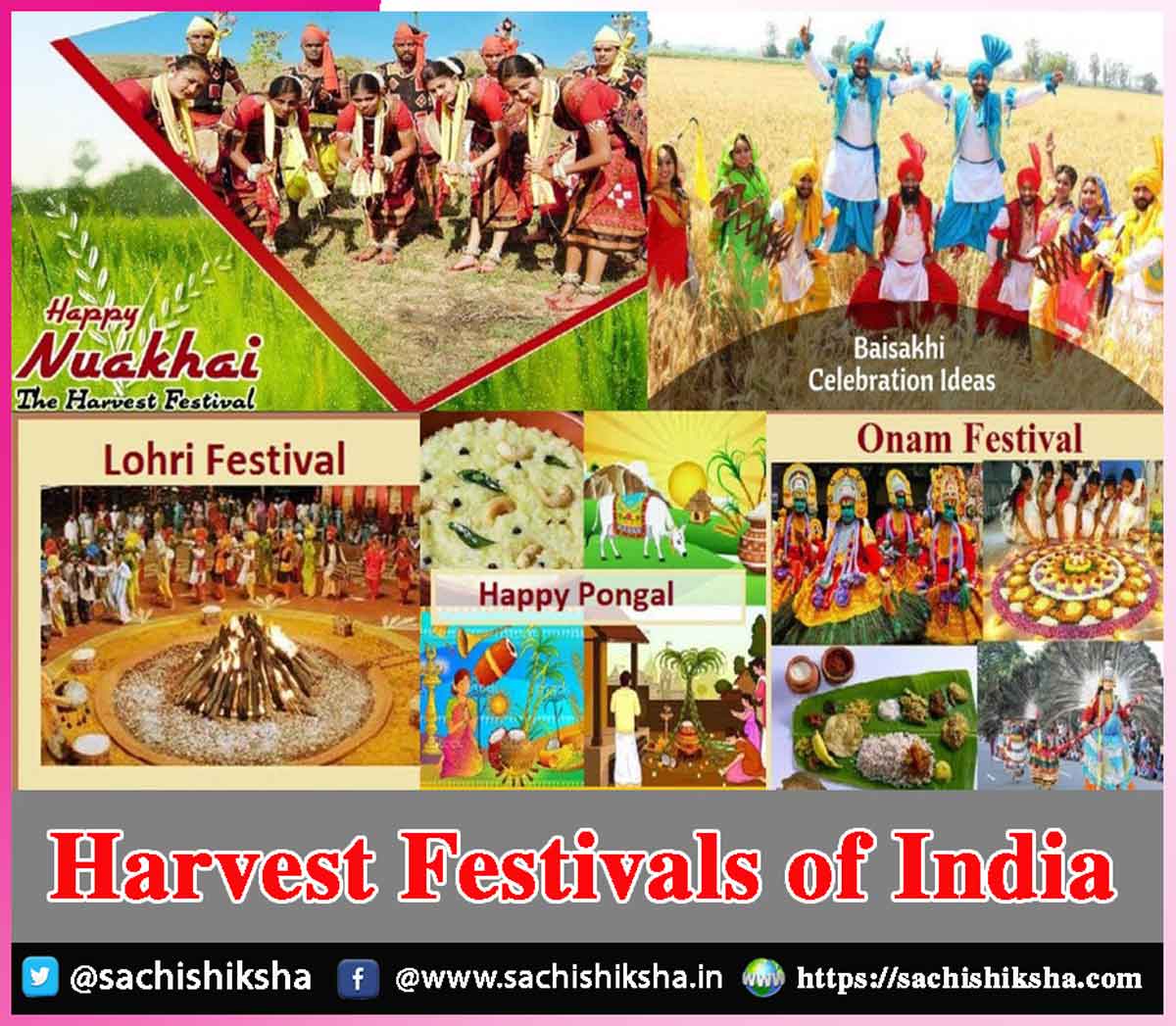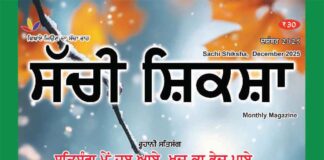Harvest Festivals of India
Introduction: As a diverse nation, India is home to numerous festivals that mark a variety of events and represent different mythical tales. Harvest celebrations during harvest festivals in several Indian states are one example of such events.
Table of Contents
An Opportunity to Appreciate the Food
Because of differences in climate and farming trends, India celebrates harvest festivals at various periods of the year. India, an agricultural nation with nearly all of its population surviving on agriculture, attributes its expansion and achievement to Mother Earth and environment. Hence, they celebrate harvest festivals. Bihu, Pongal, Lohri, and Makar Sankranti are some of the most prominent festivals. Harvest festivals are an opportunity to appreciate the food that has been grown.
An Opportunity to Convey Thanks
Harvest festivals are celebrated with great excitement and devotion across various states, societies, and cultures. It is a method for farmers to convey their thanks for their abundant crops while also seeking graces from environment and the divine. Harvest festivals represent the deep rooted principles and requirements of the individuals who observe them today.
India, as a diverse nation, celebrates many harvest festivals due to differences in weather and farming patterns around the country. Despite their profound roots in history, these festivals represent the present ideals and needs of those who attend them. Harvest celebrations are seen as a chance for people to show thankfulness for abundant crops while also recognizing the arduous work and labor needed in crop cultivation.
Lohri-Harvest Festival

Harvest Festival: Makar Sankranti
Observed in the second week of January, this marks the conclusion of the harvest time in the country, when farmers lay down their farming implements and gather in happiness and harmony. Sankranti is celebrated in many ways throughout North India, including flying kites in Gujarat and some sections of Rajasthan.
Pongal
Pongal is one of South India’s most celebrated harvest festivities. It is celebrated annually in mid-January and symbolizes the start of Uttarayan-the Sun’s expedition towards the North. It is primarily observed in Tamil Nadu and lasts approximately four days. Pongal’s actual meaning is “spilling over,” and it gets its name from the habit of cooking rice in a pot till it spills while people express thanks for the environment during the festival. The festival’s traditional activities include Kolam creating artwork, swinging, and cooking.
Bihu
Bihu is Assam’s harvest celebration, which is divided into three parts: Bohag Bihu, Kati Bihu, and Magh Bihu. Bohag Bihu, or Rongali Bihu, occurs in mid-April and symbolizes the start of the Assamese New Year. People dress in traditional clothes & perform the Bihu dance, and dine on pitha, larus, and sweet dishes.
Onam
Onam, an agricultural celebration in Kerala, is held during the Malayalam month of Chingam (August-September) and commemorates King Mahabali’s return home. People beautify their homes with flowers, compete in snake boat races, and consume customary Onam sadhya, which includes rice, sambar, avial, and payasam.
Baisakhi
Baisakhi is an annual harvest festival observed in Punjab, a portion of Haryana, and Delhi on April 13th or 14th. It signals the start of the fresh agricultural period. People go to Gurdwara; perform Bhangra and Gidda dances, and eat customary meals such as Sarson ka saag and Makki ki Roti.
Nuakhai
Nuakhi is an Odishan harvest festival held on the Panchami Tithi of the lunar month of Bhadraba (August-September). It signals the start of the fresh agricultural year. Families present the god with the first harvest of the growing season while devouring a meal of rice, Dalma, and sweets.
Vaisakha
Vaisakha, a festival of harvest in Bihar, is observed on the first day of the Hindu month of Vaisakha (April-May) and commemorates the start of the upcoming agricultural season. The first crop of the year is presented to the god, and an elaborate meal of sattu, litti, and chokha is enjoyed.
Chhath Puja
Chhath Puja is an important harvest celebration in Bihar, Jharkhand, and Uttar Pradesh. It is observed on the sixth day of the Hindu month of Kartik (October-November) and honors the sun god. Individuals present arghya (water) to the sun deity, take pious dips in rivers, and eat customary dishes like kheer, thekua, and laddus.
Hemis
Hemis is the harvest celebration of Ladakh. It is observed in the Hemis Monastery every June-July to commemorate the birth anniversary of Guru Padmasambhava, the initiator of Tibetan Buddhism. Cham, a traditional form of dance, is performed by individuals wearing in vibrant outfits while enjoying native Ladakhi delicacies.
Ugadi
Ugadi is a customary occasion that is regarded as auspicious for starting new projects. The festival’s fervor and enthusiasm reflect its importance in numerous areas of India, including Andhra Pradesh, Karnataka, and Telangana.
Gudi Padwa
Gudi Padwa commemorates Maharashtra’s New Year. Crops such as mangoes are harvested, marking the end of the Rabi agricultural season. The customary Gudi, or bamboo doll, is constructed from mango and neem leaves and hung in the entrance of the door. It is also celebrated in Karnataka and Andhra Pradesh.
The Vishu
The Vishu festival honors Lord Vishnu or Lord Krishna, and it includes large family banquets, evening rituals, and fireworks. It is the first day of the Malayalam New Year. Women prepare Vishukkani, an assortment of traditional foods that are presented to the gods. It is celebrated in Karnataka as well.
The Dree Festival
The Dree Festival in Arunachal Pradesh recalls a significant period during the year for the Apatani culture. Annually on July 5th in the Ziro region of Arunachal Pradesh, Dree is celebrated by prayers.
Hornbill
Hornbill, Nagaland’s harvest festival, is held annually in the first week of December. It is devoted to the holy bird hornbill. Participants engage in conventional Naga dances, eat native Naga meals, and attend the Hornbill International Rock Festival.
Ka Pomblang Nongkrem
Ka Pomblang Nongkrem, a Meghalaya harvest celebration, takes place each November. The deity Ka Blei Synshar is adored. People conduct native Khasi dances such as Shad Nongkrem, dress colorfully, and eat traditional Khasi cuisine.
Wangala
Wangala is held in Meghalaya each November and is devoted to the devotion of the deity Saljong, who is said to improve agriculture. Wangala, a customary dance, is performed, and attendees enjoy traditional Garo cuisine while watching the flag-hoisting ritual. It is celebrated in Assam as well.
Karam
Karam is a festival observed in Jharkhand in September-October and pays homage to the adoration of the divine Karma, who is thought to bring prosperity in agriculture. People play Jhumar, dress colorfully, and enjoy traditional cuisine.
Nabanna
Nabanna, a West Bengal harvest festival, is held on the occasion of Vishwakarma Puja in the Hindu month of Bhadra (August-September). The deity is given the first harvest of the period, and an offering of rice, curry, and desserts is served.
Conclusion
India, a country rich in history, culture, and custom, observes harvest festivals in almost every part of the country. These holidays hold a lot of meaning, and ceremonies are undertaken in the honor of the special day. Harvest Festivals in India celebrate the abundant harvest season with joy and enthusiasm.
Because of its various seasons and agricultural trends, India celebrates harvest days at various times of the year. India is an agricultural nation with more than half of its people reliant on agriculture, owing its expansion and achievement to Mother Earth and ecology. It is a method for farmers to convey their thanks for their abundant crops while also seeking favors from environment and the Creator. Harvest celebrations highlight the significance of labor, communal existence, and the exchange of resources.














































